How to stay out of the Gmail Promotions tab in 2023
Last updated: May 13, 2024

Since the rollout of the Gmail Promotions tab, email marketers have worried about getting their emails buried in this secondary tab.
It’s a valid concern: Most people don’t check their Gmail Promotions tab as frequently as they do their primary inbox. So landing in the Promotions tab can hurt an email’s visibility and, in turn, your overall email marketing success. So how can you get your emails out of the Gmail Promotions tab and into the light of day? We’ll be real: There’s no surefire way to ensure all your emails land in someone’s primary inbox.
Gmail’s sorting algorithm is designed to keep users’ inboxes uncluttered (i.e., free of most marketing emails). It uses hundreds of factors to determine where each email belongs — and trying to circumvent that system can harm your email strategy rather than help them.
Get ahead with innovative marketing automation! Unleash conversions & engage audiences:
But there are some sustainable, safe ways to get your emails into primary inboxes. These range from direct audience intervention, like asking your audience to whitelist you, to more indirect routes, like sparking audience engagement so Gmail decides you’re relevant enough for primary inboxes.
We’ll get into all of that in this post. Let’s get started:
What is the Gmail Promotions tab? How does Google decide which emails end up in the Promotions tab anyway?
Personal inboxes can get cluttered and unusable — and that was especially true in 2012, when your baby shower invites would get mixed in with marketing newsletters, promotions, and notifications from Twitter.
But in 2013, Google debuted several new tabs that reduce clutter in the inbox. The folders include:
- Primary: Emails from people you know
- Promotions: Deals, offers, and other “call to action” messages
- Social: Messages from social media platforms .
- Updates: Notifications, confirmations, receipts, bills and statements.
- Forums: Messages from online groups, discussion groups and mailing lists
When you send an email, Google checks the message, then sorts every email into a tab with a machine learning algorithm that considers factors like:
- who the email comes from
- what type of content is in the message
- how Gmail users have interacted with similar content.
How does Outlook decide which emails end up in the Other tab?
Outlook also employs a multi-folder inbox and sorting system to help recipients.manage their emails. Emails that seem to require a quick response are sorted into the primary Focused folder, whereas less “important” emails are filtered to the secondary Other folder.
Like Google, Microsoft uses user behavior to decide where to sort each incoming email. The most important factors include:
- Previous responses to similar emails: If you move an email from a newsletter to the Focused Inbox, future messages from the same newsletter will automatically appear in the Focused inbox.
- People you have emailed in the past: If you send many emails to someone messages from their email address automatically appear in the Focused Inbox.
- People in your Outlook Contacts: If you add an email address to your address book, emails from these contacts will appear in the Focused Inbox.
How to keep your emails out of the Gmail Promotions tab
Let’s level set: Email service providers can’t control where your emails land. That’s up to inbox service providers, which usehundreds of unknowable factors to determine where to sort each email. There’s no surefire way to beat the Google or Microsoft algorithm.
And more often than not, trying to game the system will backfire and harm your deliverability.
However, there are a few safe, effective ways to increase the odds of reaching your recipients’ primary inboxes. That includes:
1. DON’T make your emails look like conversations
We’ve seen people suggest redesigning your emails so that they appear less like promotions and more like conversational emails, in hopes of tricking the algorithm into sorting emails as “personal.” Some common recommendations include removing multiple links from your emails, stripping HTML from the design, or removing images from the email.
There are a few problems with this approach, though:
- Stripping the design features, links and images of your emails limits what you can say and promote. Not to mention that in a world of beautifully branded emails, your pared-down message might stand out in a bad way (or appear spammy). Sure, you might net a few extra opens. But in the long run, you risk degrading the quality of your marketing emails to the point of diminishing returns.
- People don’t like feeling duped. Getting a promotional email in their primary inbox — especially one that’s made to look like something more personal — will irritate some of your audience. This approach might work for a few sends, but eventually you run the risk of breaking the trust between you and your audience. And that’s a recipe for unsubscribes, spam complaints and deliverability issues.
- It won’t work long-term. As you can see, optimizing your emails for the primary inbox is a risky strategy. The costs don’t seem to outweigh the benefits, either: The Google algorithm uses an opaque set of factors to determine where to place an email, including the sender’s identity and the recipient’s engagement. So if someone isn’t moved by your content, your emails still won’t make it into their primary inbox – and you’ve cheapened your emails in the process.
2. Ask subscribers to add you to your contact list
This is the best way to ensure your emails will land in your recipients’ primary inboxes. Once subscribers tell their inbox service provider that they’re familiar with you, theywill recognize you as a familiar sender and send your emails right to the primary inbox.
On Gmail, all your subscribers need to do is:
- Open the email
- Click the sender’s name
- Press the person icon on the top right corner of the box that appears
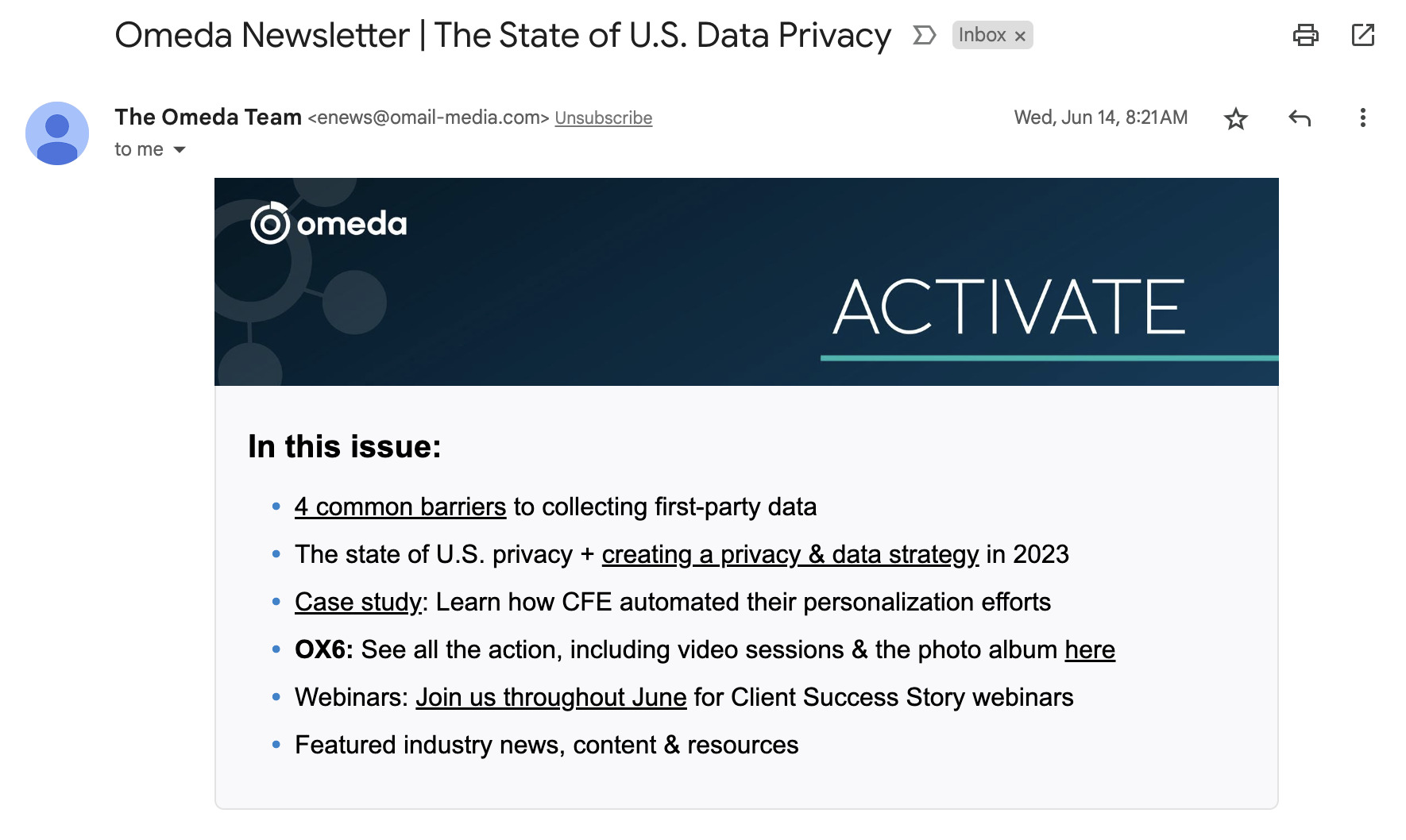
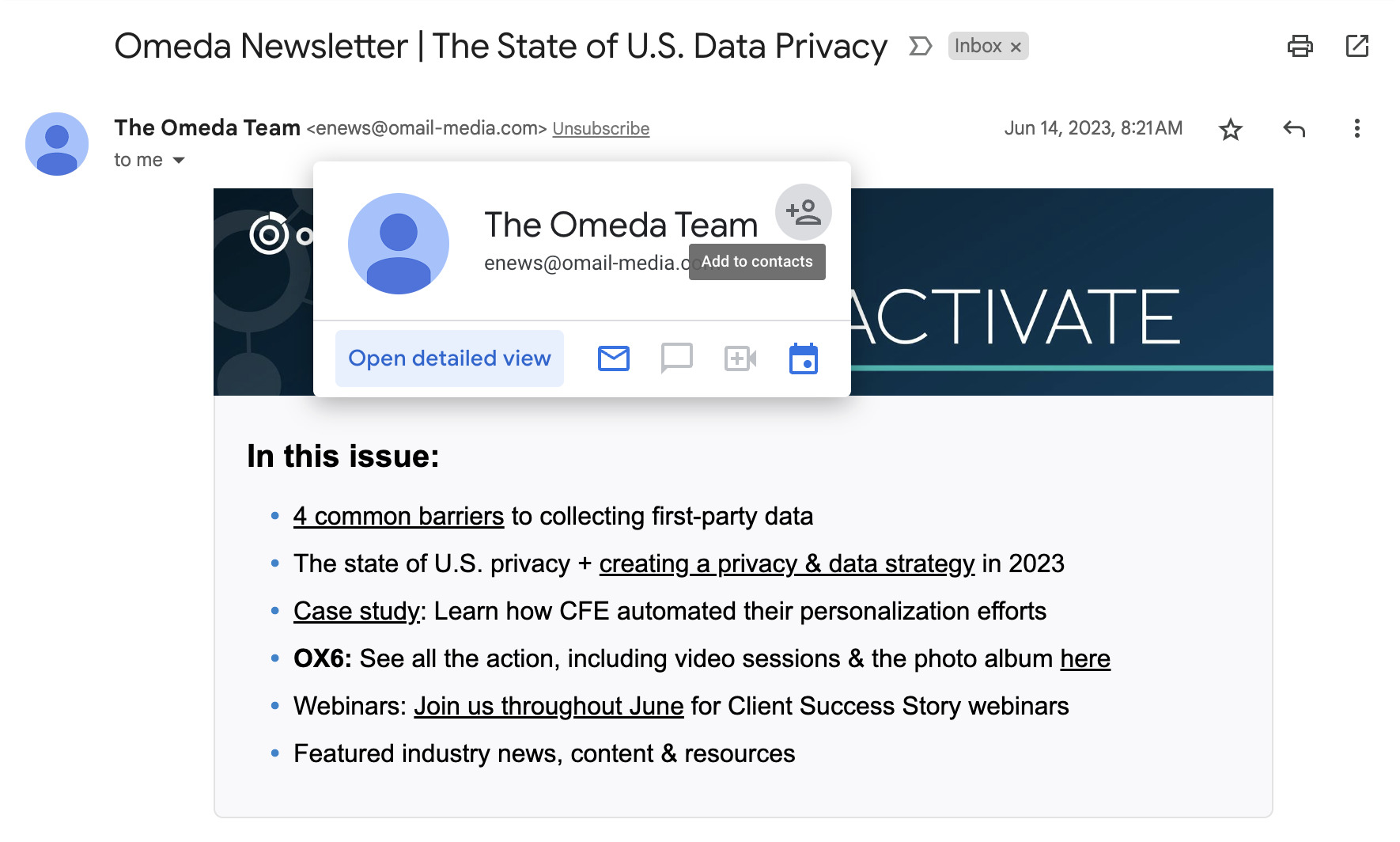
On Outlook, subscribers need to:
- Open the email
- Click the sender’s name
- Press “Add to contacts” in the box that opens
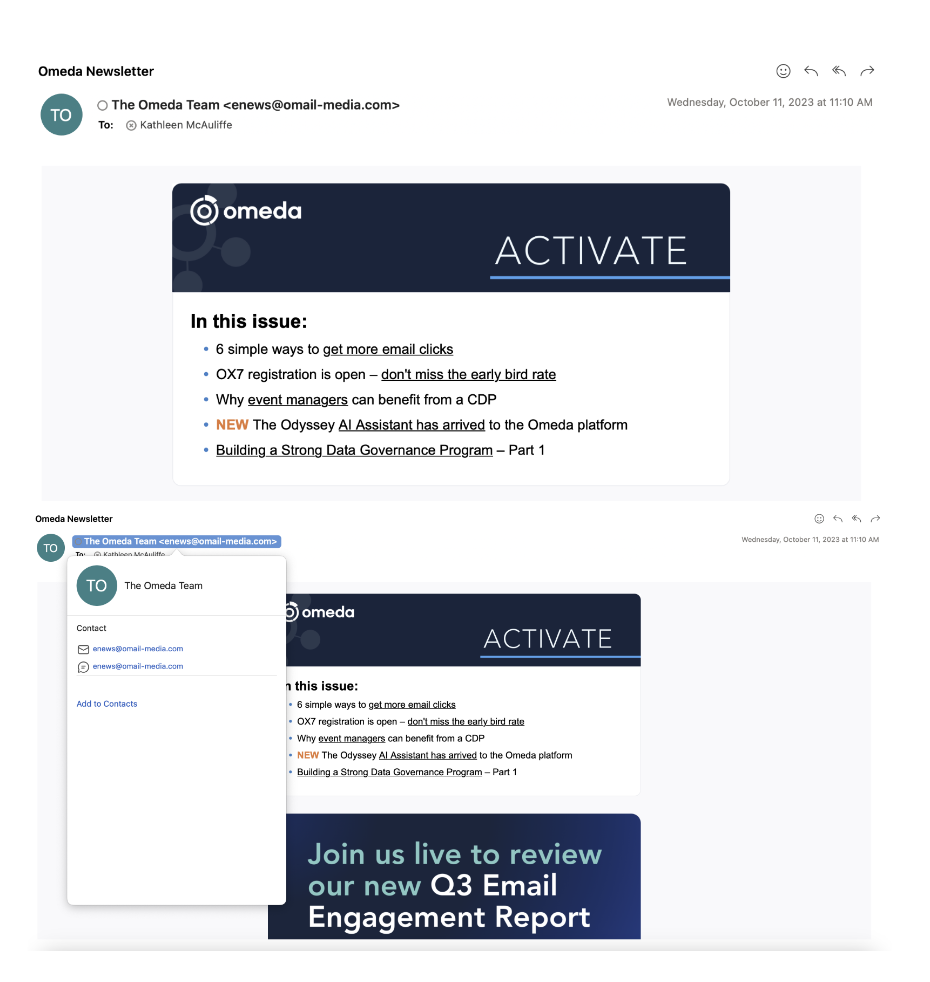
The hard part, of course, is getting customers to do this. The best time to ask is in your initial subscription confirmation email or welcome email series. Or include a note in the header or footer of your standard emails.
Just say, “Want to make sure our emails always make it to your inbox? Add us to your contact list,” then list basic instructions.
(Note: Also include these instructions in your re-engagement emails. It’s always possible someone hasn’t engaged with your emails because they haven’t checked their Promotions folder lately.)
3. Encourage Gmail recipients to filter their inbox by “unread first”
Whitelisting is one of the best ways to get your emails into primary inboxes, but this strategy has a catch: Your subscribers might not want to add you to their contact list before seeing whether your content is worth it. That’s especially true if you’re new to the newsletter game or coming from a less established company.
If that’s the case, consider asking recipients to filter their inbox by “unread first.” This eliminates all tabs from the recipient’s inbox, so the most recently unread emails surface to the top. To do this, readers need to:
- Navigate to their Gmail Inbox settings
- Select the Inbox tab
- Under Inbox Type, select “Unread first.”
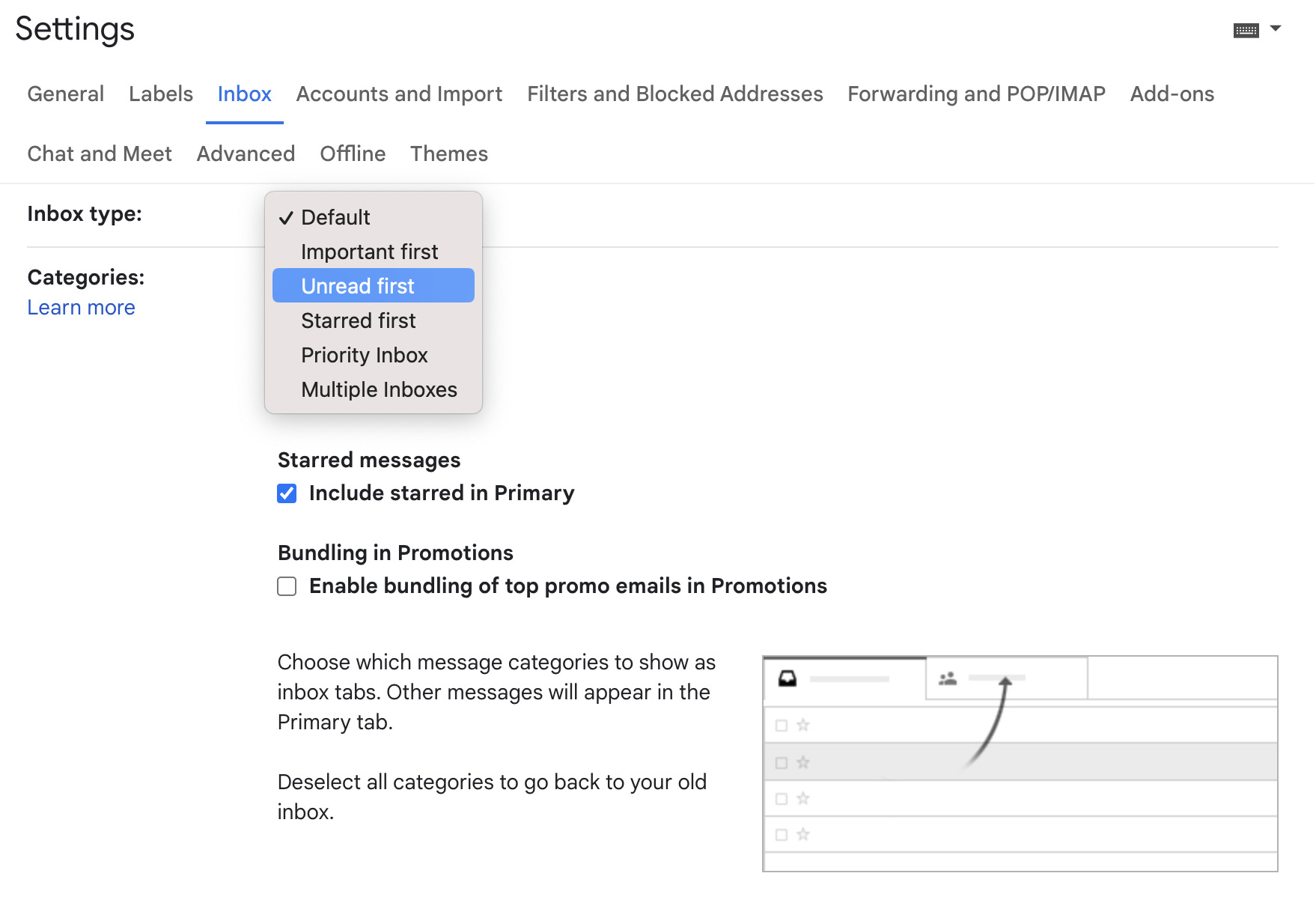
This still requires your audience to complete additional steps. But some might perceive this ask as less intrusive than adding you as a contact — and that could make them more motivated to do it.
And with the right copy, you can incite action. Val Geiser does this beautifully on her subscription confirmation page for Open Rates Newsletter, as shown below. Upon verifying their email, new subscribers are directed to this confirmation page, where they get quick and complete instructions on how to update their inbox.
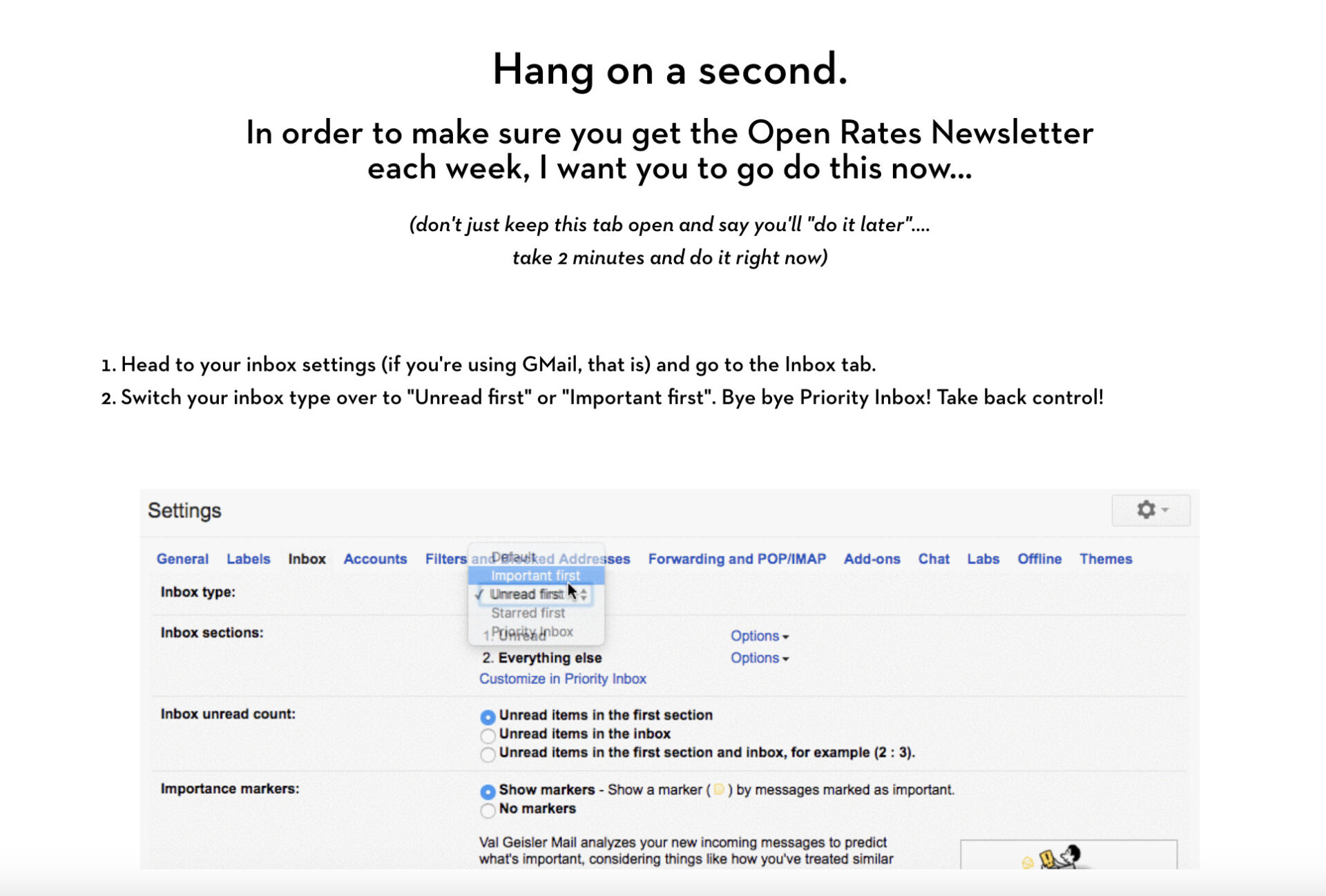
This ask works for a few reasons:
- Note the light, pleasant tone and simple visual instructions — this primes someone to view the task as simple rather than an inconvenience.
- The copy emphasizes the benefit for the reader (“In order to make sure YOU get the Open Rates newsletter each week…”). It’s not “change your inbox settings so I can get in your inbox,” but “spend 2 minutes changing your settings so you have access to my newsletter’s expertise and value..”
- She recognizes that some people find inbox tabs useful and doesn’t assume that everyone will want to delete it. Instead, she gives that group additional instructions on configuring their inbox tabs, shown below.
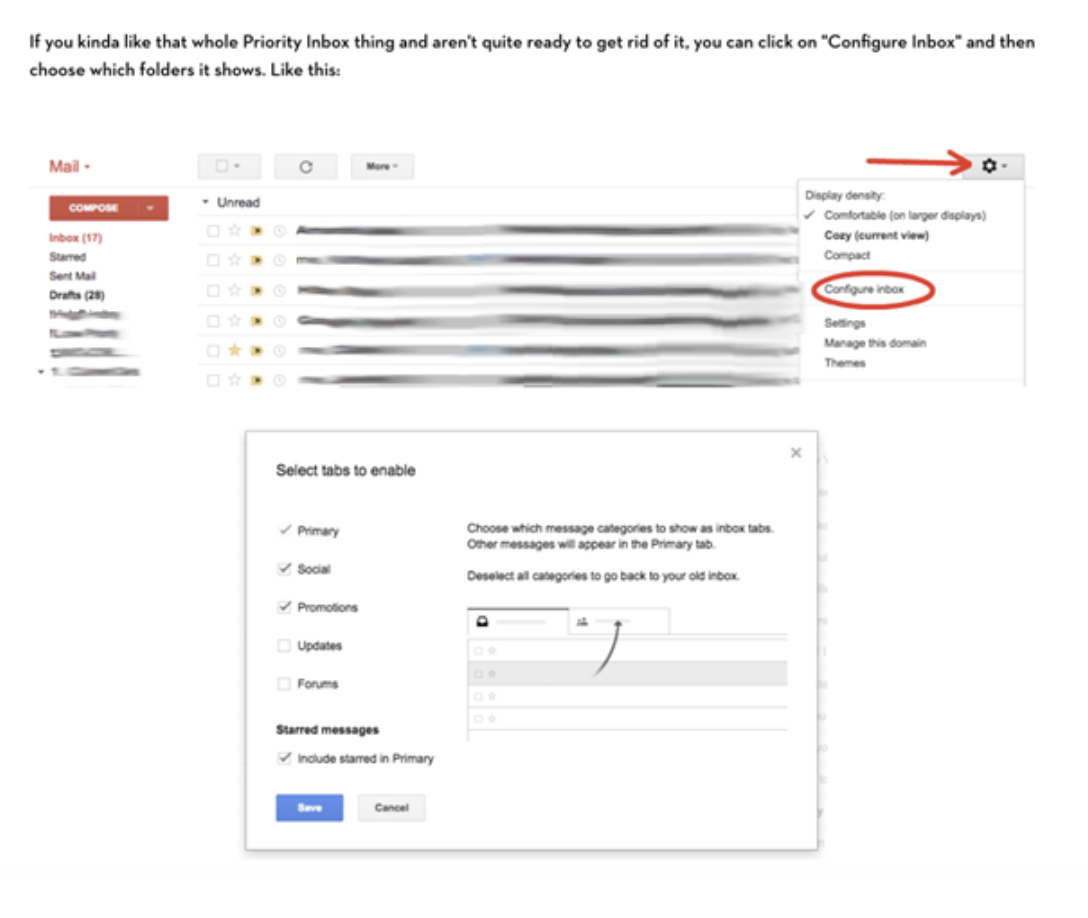
4. Encourage subscribers to drag your emails to their primary tab
Gmail and Microsoft take many factors into account when deciding where to place an email, but the most important one is the sender’s own input.
So if your subscriber actively moves one of your emails from a secondary inbox to the primary inbox, their ISP will remember that in the future and be more likely to send the rest of your emails to their main inbox.
Ask readers to do this in your subscription confirmation and welcome email series. Add a note like “We typically send our newsletter 2x per week on Tuesday and Thursday mornings. If you don’t see it, check your Gmail Promotions tab or Other folder and move it to your primary inbox.”
This has two main benefits:
- It primes readers to seek out your email in the Gmail Promotions tab if there’s an unexpected delay, rather than waiting around and wondering why they never got it.
- If they do move the email back to primary, they’re telling Google that they find your content valuable and want to see it in their main inbox.
5. Ensure your subscribers signed up for your emails
ISP algorithms weigh someone’s engagement heavily when determining where to sort their email. So if somebody never signed up in the first place? Safe to say they’re not going to engage.
Check your list to confirm that everyone has actively opted in to receiving emails from you — so you’re only messaging people that are likely to receive your messages in their primary inbox.
6. Segment your audience list using engagement data
Google’s algorithm is a black box, but this much is true: Google elevates content that we consistently view – and it relegates content we clearly don’t care about. So if someone is consistently engaging with your emails, they’re more and more likely to get that email sent to their primary inbox in the future.
Pleasing your audience is top priority if you want to land in your recipients’ primary inboxes. Obviously you can’t wow everyone at all times. But tailoring your outreach can get you pretty close.
The easiest way to do this is through segmentation. This ensures that everyone’s getting content relevant to their needs — and clicking and opening your emails. Here’s how to segment your audience with ease:
- Create a single customer view: Your segmentation is only as good as the data underlying it. If your data’s scattered across multiple solutions, you’ll have a distorted view of your customers. And that means all your personalization and segmentation efforts will be mistargeted. But if you use a customer data platform, you can take in data from every touchpoint you use to reach your audience, then unify, validate and clear it of duplicates, all in one place.. This gives you one single, complete profile for each member. Without any duplicates or incomplete entries to distort their profile, you can add them to the right segments and create the message that drives them to action .
- Get the right contacts into your email list: To segment your audience, you need to feed an updated list of contacts into your email tool. Confirm that there’s a two-way sync between your customer database (whether it’s a CRM, CDP, etc.l) to smooth this process. Better yet: use a tool that combines these two tasks: Since Omeda combines a CDP with an email tool, every customer profile is updated in real time and customers are added to new segments when the criteria changes.
- Mix and match filters for maximum effect: The narrower your segments, the more precise and effective your outreach will be. So using your marketing segmentation software, you can query your audience using a combination of factors — interests, behaviors, content downloads, most recent engagement, depth of engagement, subscription history, and more.
- Use preference pages to inform segmentation: On your preference pages, ask new subscribers to check off topics they’re interested in hearing about, then add them to relevant newsletters or emails.
Subscribe to our newsletter
Sign up to get our latest articles sent directly to your inbox.
What you should do now
- Schedule a Demo to see how Omeda can help your team.
- Read more Marketing Technology articles in our blog.
- If you know someone who’d enjoy this article, share it with them via Facebook, Twitter, LinkedIn, or email.